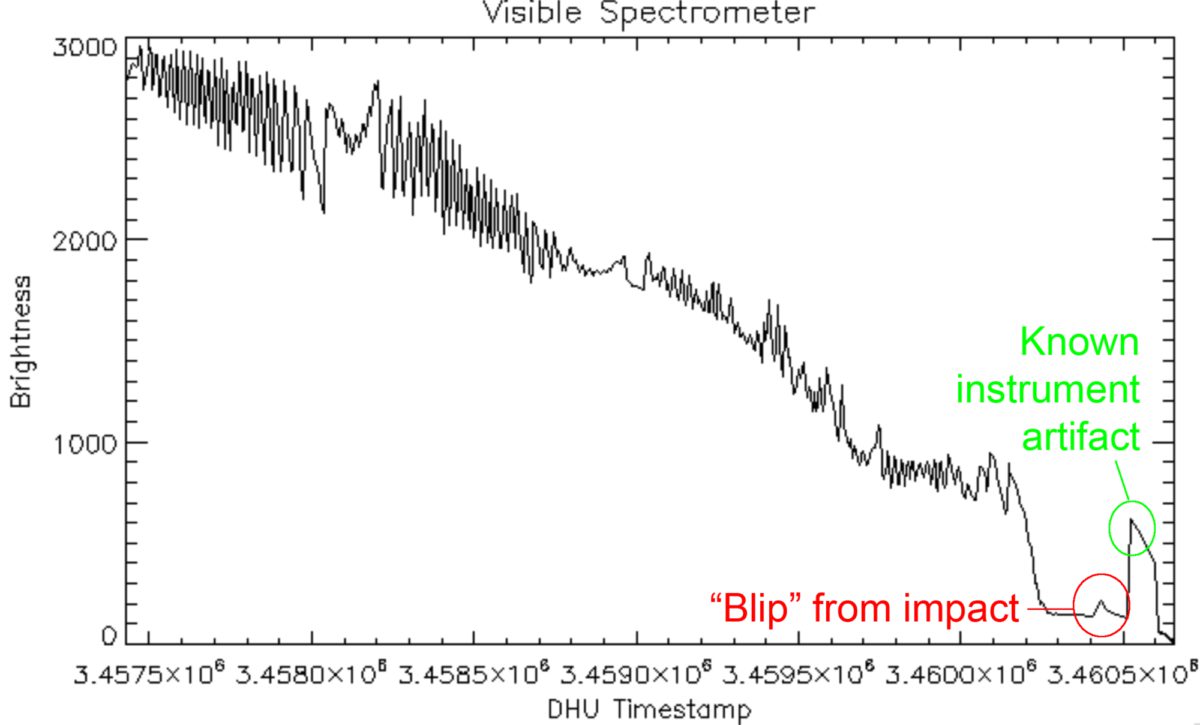Emily Lakdawalla • Oct 09, 2009
LCROSS visible spectrometer data showing impact flash
This plot just shows the aggregate radiance in ultraviolet and visible wavelengths -- all wavelengths -- seen by one of LCROSS' spectrometers after the Centaur hit the Moon. Not much can be read from this graph except for the very, very good news that they did detect the flash, which means that buried in their spectral data should be good information on what was in the subsurface where the Centaur hit.

The Time is Now.
As a Planetary Defender, you’re part of our mission to decrease the risk of Earth being hit by an asteroid or comet.
Donate Today

 Explore Worlds
Explore Worlds Find Life
Find Life Defend Earth
Defend Earth

